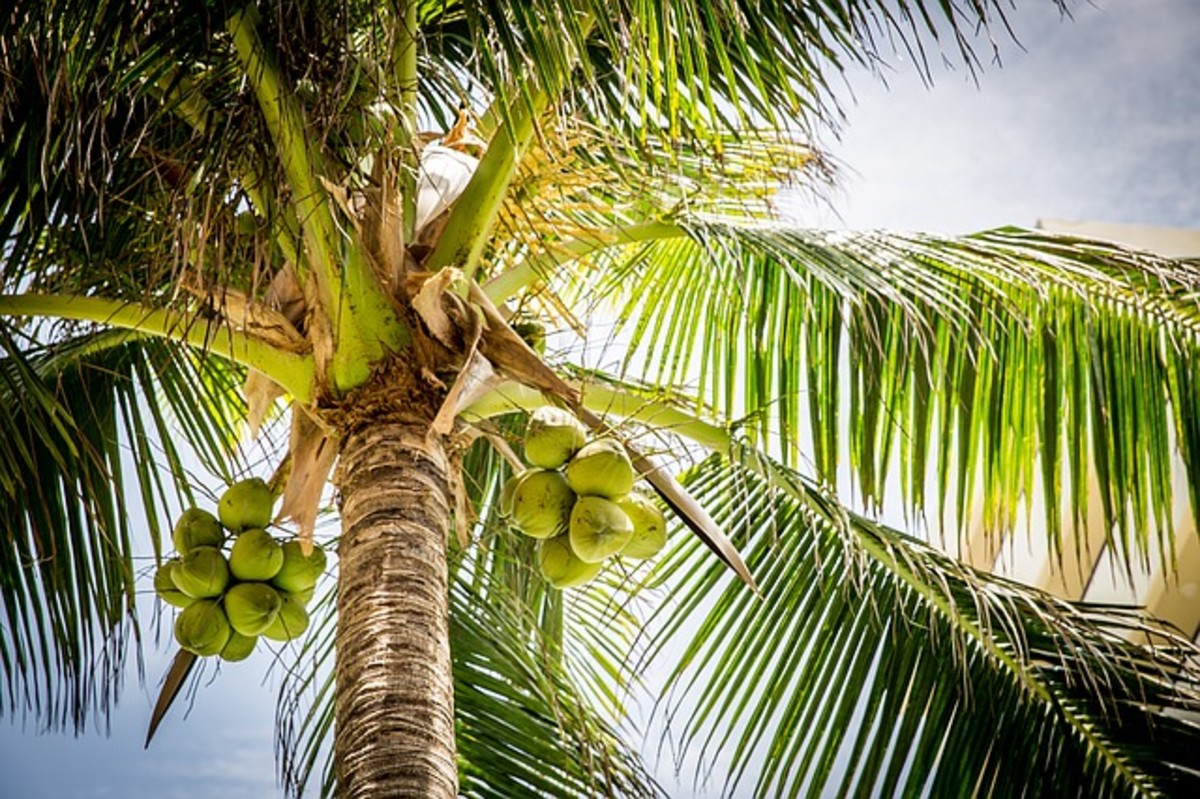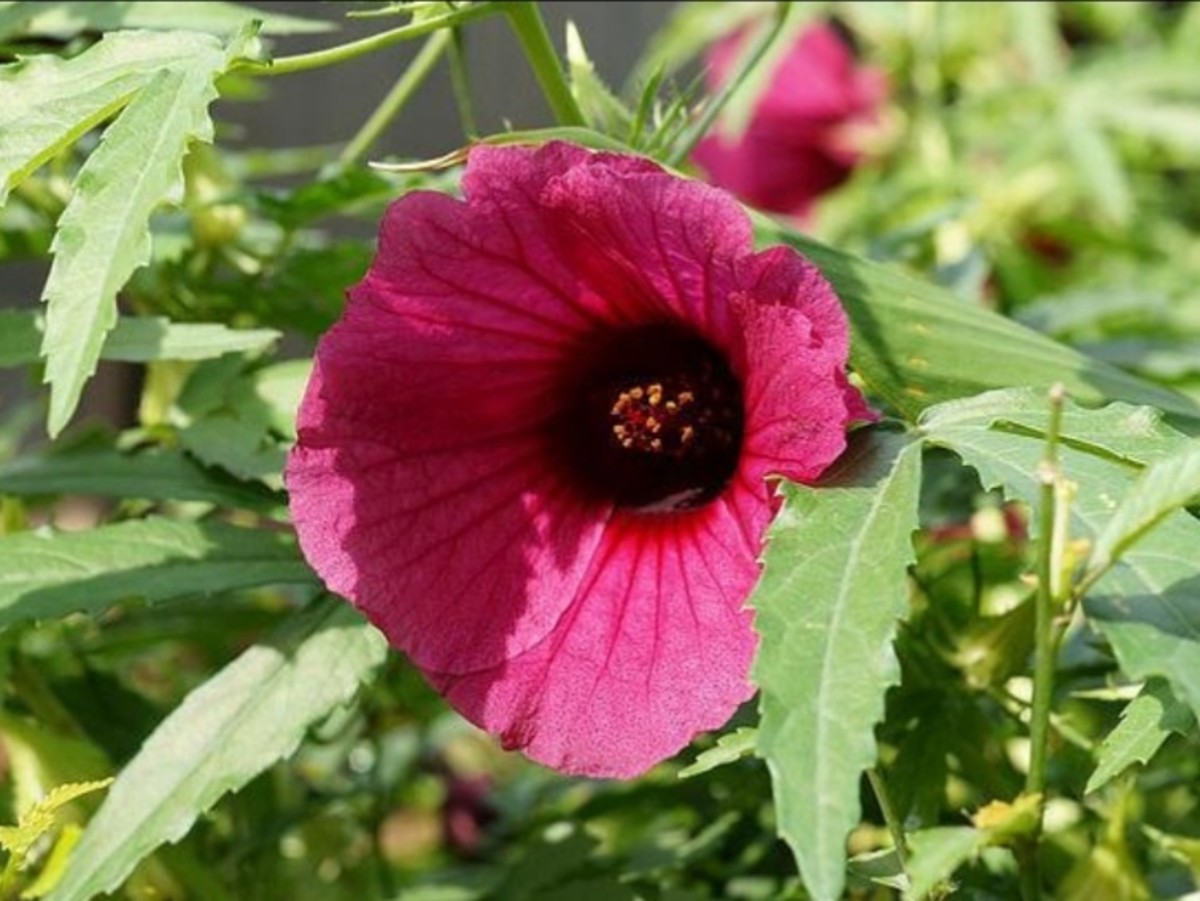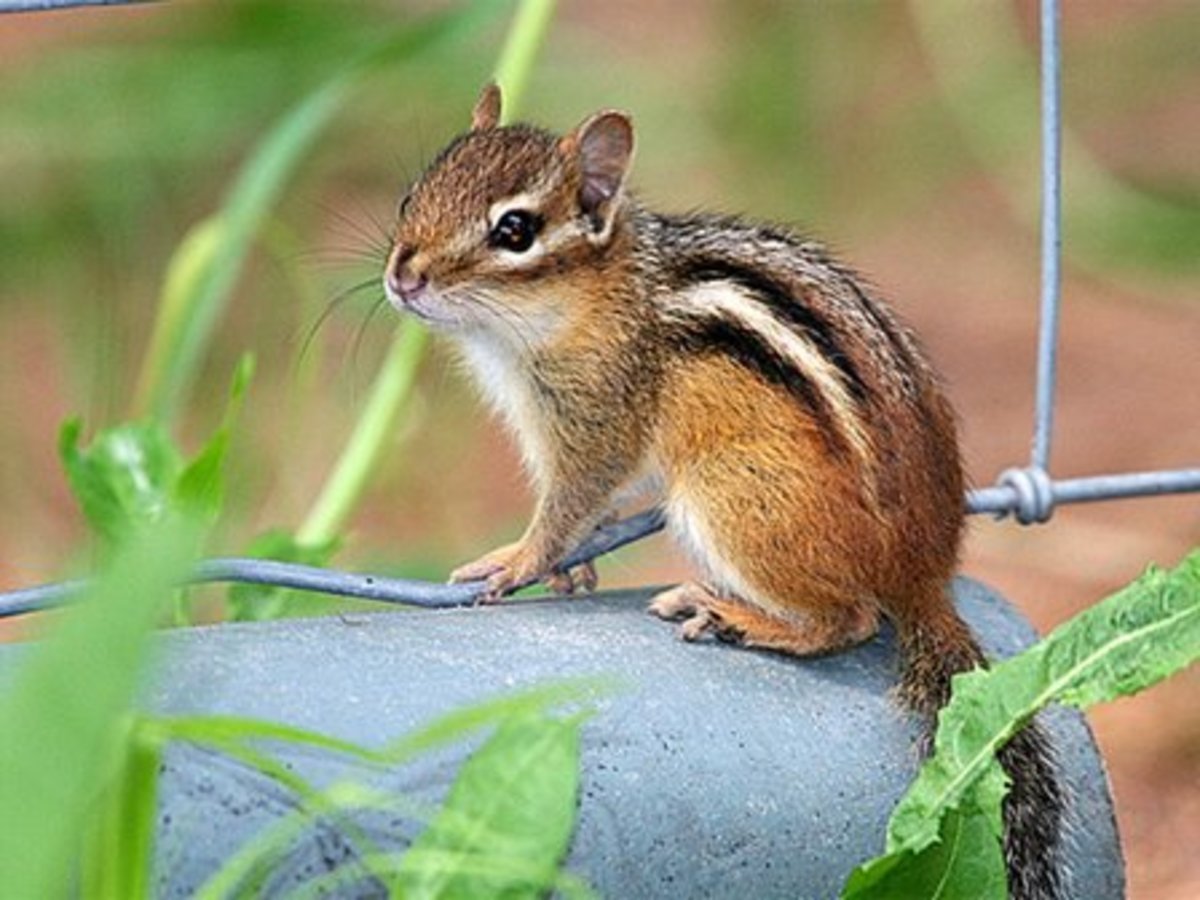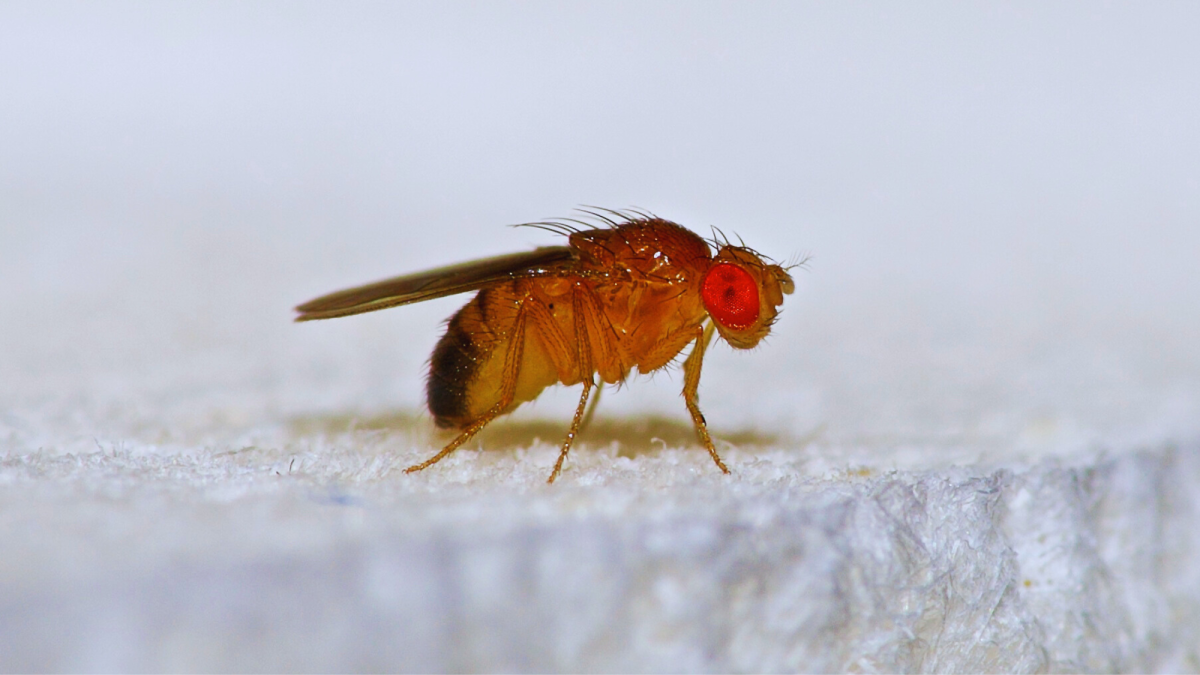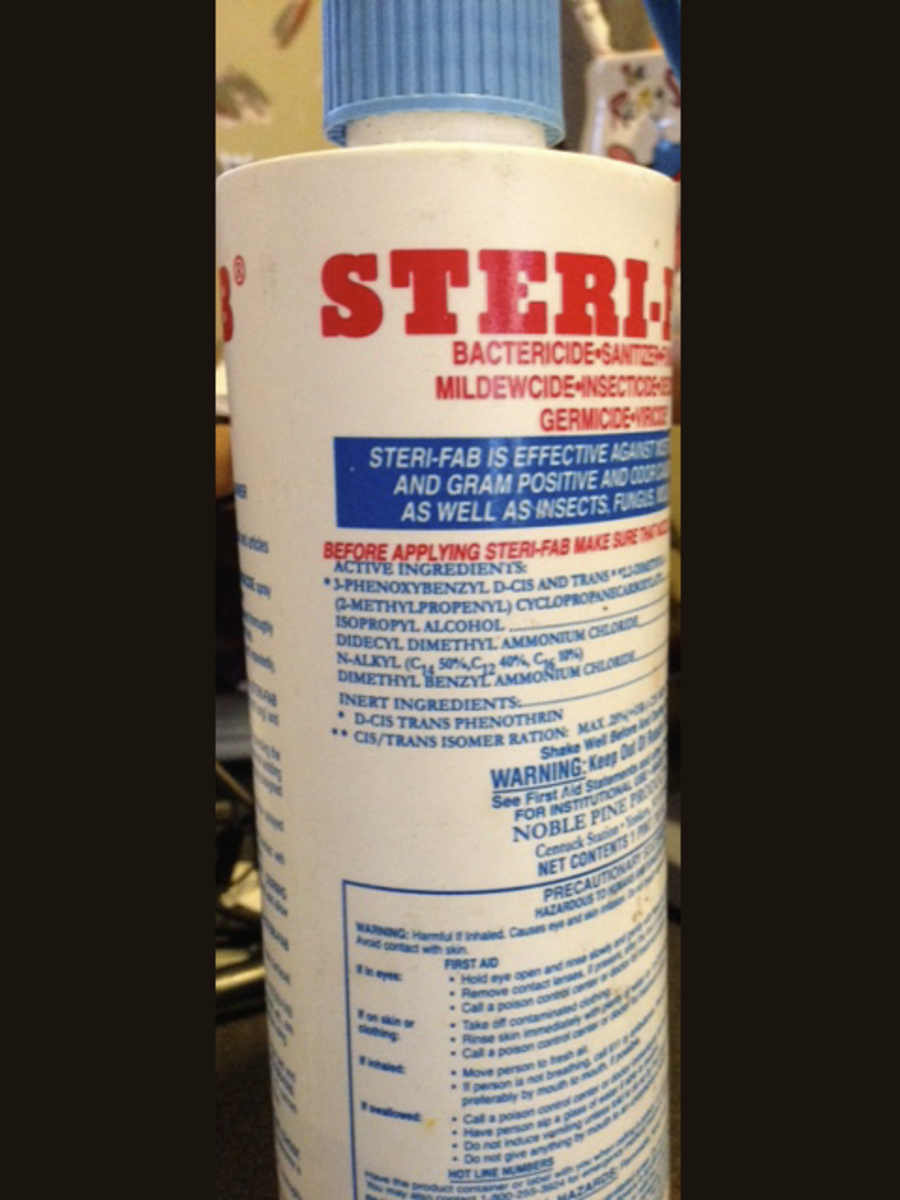- HubPages»
- Home and Garden»
- Cleaning»
- Eliminating Pests
Race against Time to Control Cocolisap Epidemic in Coconuts in the Philippines
Coconut tree in the foreground was killed by cocolisaps; those in the background are attacked by cocolisaps
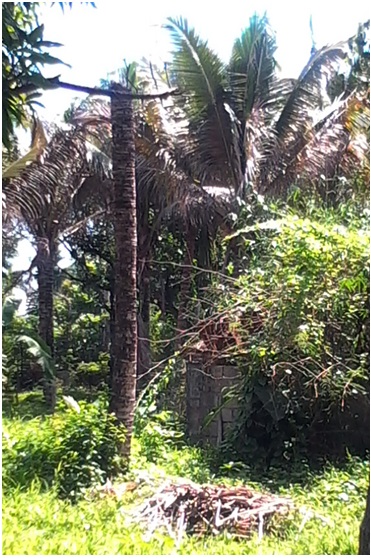
Larvae of cocolisap; infested fruit, leaf and coconut stand. (Photo from Internet July 15,2014)
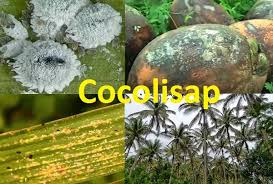
Cocolisaps can kill a coconut tree in 60 days
Did you know that there are two species of cocolisap in the Philippines today?
One species is called scientifically as Apidiotus destructor Signoret. Another species is called scienfically as Apidiotus rigidus Reyne. This is according to Ms. Sheryl Yap, Ph.D. Assistant Professor at the University of the Philippines at Los Baños, College of Agriculture, National Crop Protection Center.
A. destructor Signoret is native to the Philippines (It was first discovered, described and named by Signoret). A. rigidus is a species introduced from Indonesia. (It was first discovered, described and named by Reyne).
A.rigidus has turned the scourge of coconuts in the Philippines.
'Cocolisap'' is a newly coined word derived from 'coconut' and 'kulisap' (insect).I have another Hub published earlier: "How to solve the cocolisap scourge in coconuts in the Philippines."
Features of A. rigidus
It is the male that flies a lot. However, it does not do the damage on coconut leaves as its probosis, or syringe-like mouth, is vestigial. It is not useful for sucking.
It is the larvae that do the damage. The egg hatches into a larva that goes through three instars. An instar is a stage of the larva distinguished by molting. A newly hatched egg molts to become second instar larva; that molts to become a third instar larva. After this third instar, it turns into adult – male or female.
The first instar larva produces a scale that is why cocolisap is mistaken to be a scale insect, like aphids (see picture above). This first instar larva burrows into a coconut leaf and feeds on it by sucking juice and nutrients. So a larva has tunneled into leaf blades up until the third instar. Three instars take about 60 days. That is enough time for thousands of larvae to suck out nutrients from the leaves and injure them. Even before its nutrients had been exhausted, the leaf turns yellow from its injuries unable to produce food for the tree. That new food is hijacked by the cocolisap.
Injured leaves turn yellow, then brown and finally dry up. A coconut tree with too few green leaves left will eventually die.
The female lays 10 to 12 eggs at a time that is why the population of cocolisap grows exponentially. A rigidus lives twice longer than A destructor making it the more destructive of the two.
How did it turn to be a pest?
The first question to ask is, why did A. destructor not turn to be a pest? The answer is that there are natural control agents in the Philippines that control its population. These natural control agents can be a parasitoid, an organism that infest the larva or adult of A. destructor, or a predator that feeds on larva or adult.
Because A. rigidus is an introduced species, no natural control agents have developed against it. If any, its population has not grown large enough to contain this species.
Also, the coconut varieties in the Philippines have not developed resistance to A. rigidus. The varieties now growing in the field could have developed resistance to A. destructor.
It is highly likely that coconut varieties in Indonesia have resistance to A. rigidus that is why it has not turned a scourge in Indonesia.
The Philippines is the top exporter of coconut products in the world. Indonesia ranks next.
Control being tested
One control scheme under test is the use of organic pesticide for 60 days, followed by biological control for two weeks, Ms. Yap said.
Contact insecticide is a poor control agent against the cocolisap. The reason is that the larva tunnels into leaves and gets protection from the leaf cuticle.
An effective control agent is systemic. This one gets into the tissues of the leaves that poisons the larvae. One drawback is that a systemic agent is slow-acting in that it must become a part of the leaf tissue. Besides, there are few systemic pesticides that are organic that do not leave a residue which is poisonous to man, farm animals, fish, fowls and honey bees.
A biological control agent is now being developed by PCAARRD (Philippine Council for Agriculture and Aquatic Resources Research and Development) under the Department of Science and Technology, says Ms. Yap.
It takes time to identify organic pesticides, parasitoids and predators. Organic pesticides are usually plants like marigold or bacteria like Bacillus thuringiensis.
It takes time to grow a lot of parasitoids (fungus or bacteria) and predators (other insects like ants). Then these are set out on coconuts and other food plants of cocolisap like mangosteen, avocado, guava, breadfruit and papaya.
Lessons from other crops
There had been insect pest epidemics from which to draw lessons. One is the diamondback moth (Plutella xylostela) that infests cabbage and other crucifers. The larvae eat leaves and cabbage head. Control agents against the diamondback moth were screened and developed, chemical pesticides and biological control agents.
The ecology of this insect was studied by Ms. Salud Fontanilla Barroga, Ph.D. in her doctoral dissertation at the University of the Philippines Los Baños (UPLB). A biological control agent (Trichogramma sp.) was developed by Belen Morallo-Rejesus, Ph.D. of the Department of Entomology, UPLB. This agent, a parasitoid, has been successfully set out in the Cordillera Administrative Region and the pest has been under control.
Another pest epidemic occurred on Benguet pines in the Cordilleras. This is the case of ips beetle (Ips caligraphus). Larvae tunnel on the phloem or food vessel of the pine tree. Leaves turn yellow and dry up. Ips is an introduced species originated from South America. It was controlled by chemical pesticides.
No qualms or safety issues on the chemical pesticides used on ips because pine wood or leaves are not consumed by man. I was a member of the team that set up the control of ips.
Failure in quarantine
The introduction of the A. rigidus is owing to a failure in quarantine. Introduction of species must be rigidly screened or scrutinized. Not just any plant, or animal, or fish, or fowl can be introduced in the country without going through quarantine.
Quarantine in the Philippines falls under the Department of Agriculture, Bureau of Plant Industry.
However, there are many ways by which A. rigidus could have been introduced. One, by bringing in mangosteen fruit bought in Indonesia. Mangosteen is considered the principal food plant of A. rigidus, according to Ms. Yap. Even one fruit, that can be hand carried in a bag, is enough to bring in the insect pest. Another is bringing in a seedling of mangosteen with eggs or larva of the pest. Still another is importation of mangosteen plant parts used in grafting.
The first incidence of epidemic infestation was reported in Balele, Batangas, Ms. Yap said.
Ms. Yap is a member of the task force involved in the eradication of cocolisap. She is a taxonomist, a specialist in the identification of insects.
New entries as of July 21,2014
Typhoon Glenda that razed CALABARZON (Cavite, Laguna, Batangas, Rizal, Quezon) provinces last week spread females, eggs and larvae of cocolisap. A larva can crawl to another healthy leaf once nutrients in a leaf it had been attacking had been exhausted. The new females lay eggs on leaves of the same coconut tree. That is why even one mature female is enough to infest a coconut tree. Subsequent generations of its siblings will kill the host tree.
Hubs on cocolisap by conradofontanilla:
http://conradofontanilla.hubpages.com/hub/How-to-Solve-the-Cocolisap-Scourge-in-the-Philippines




